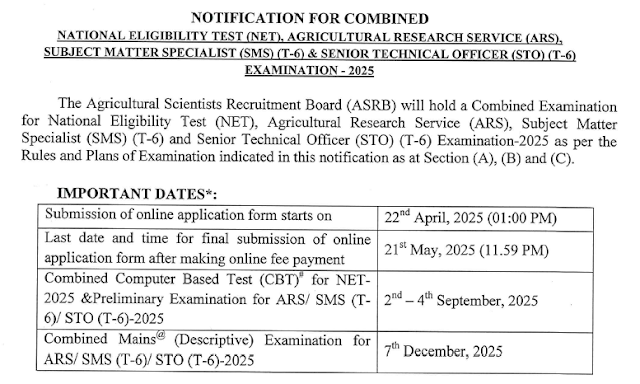Trends in Plant Science: Past, Present, and Future.
By Farin Khatoon.
The field of plant science has witnessed remarkable transformations over the years, driven by advances in technology, societal needs, and global challenges. Understanding the progression of past trends and anticipating future directions provides valuable insights into the evolution and potential of this dynamic discipline.
Previous Trends in Plant Science
1. Green Revolution and Agricultural Productivity
The mid-20th century marked the Green Revolution, which focused on developing high-yielding crop varieties, synthetic fertilizers, and pesticides. This era significantly increased global food production, mitigating hunger in many parts of the world.
Key Achievements: Development of semi-dwarf wheat and rice varieties by scientists like Norman Borlaug.
Impact: Improved global food security but led to environmental concerns like soil degradation and pesticide overuse.
2. Conventional Breeding Techniques
Traditional plant breeding methods such as hybridization and selection dominated the 20th century.
Focus Areas: Enhancing yield, disease resistance, and stress tolerance.
Limitations: Time-consuming processes with limited precision compared to modern genetic tools.
3. Plant Tissue Culture and Micropropagation
The advent of plant tissue culture techniques in the 1960s allowed for clonal propagation, germplasm preservation, and genetic transformation.
Applications: Production of disease-free plants, large-scale propagation of ornamentals, and conservation of endangered species.
4. Discovery of Plant Hormones
The early studies on plant hormones like auxins, gibberellins, and cytokinins revolutionized our understanding of plant growth and development.
Significance: Provided insights into plant physiology, paving the way for controlled agricultural practices.
5. Genetically Modified Organisms (GMOs)
The late 20th century saw the emergence of genetically modified crops like Bt cotton and golden rice.
Benefits: Enhanced resistance to pests and diseases, improved nutritional content.
Challenges: Public concerns over biosafety and ecological impacts.
Current Trends in Plant Science
1. CRISPR and Genome Editing
Gene-editing technologies like CRISPR/Cas9 have revolutionized precision breeding.
Applications: Developing stress-tolerant crops, improving nutritional profiles, and creating disease-resistant plants.
Example: Genome-edited rice for drought tolerance.
2. Plant-Microbiome Research
Exploring the role of microbial communities in plant health and productivity is a rapidly growing area.
Focus: Utilizing beneficial microbes for sustainable agriculture and biocontrol.
Example: Microbial inoculants to reduce chemical fertilizers.
3. Omics Technologies
Advances in genomics, transcriptomics, proteomics, and metabolomics have deepened our understanding of plant systems.
Applications: Identifying genes linked to desirable traits, unraveling metabolic pathways, and improving crop resilience.
4. Synthetic Biology and Biopharmaceuticals
Engineering plants as biofactories for producing vaccines, antibodies, and biofuels.
Example: Production of therapeutic proteins in Nicotiana benthamiana.
Impact: Addressing global health and energy needs.
5. Climate-Smart Agriculture
Developing crops resilient to climate change has become a pressing priority.
Focus Areas: Heat tolerance, water-use efficiency, and carbon sequestration.
Example: Climate-resilient maize for sub-Saharan Africa.
Future Trends in Plant Science
1. AI and Machine Learning in Agriculture
Artificial intelligence will play a pivotal role in phenotyping, precision farming, and disease detection.
Example: Predicting crop yields and optimizing resource use through AI-driven models.
2. Exploration of Plant-Fungal Interactions
Uncovering the chemical warfare between plants and fungi holds promise for novel antifungal compounds.
Applications: Discovering bioactive metabolites and enhancing plant immunity.
3. Vertical Farming and Controlled Environment Agriculture
Innovative farming methods like vertical farming will address urban food needs.
Advances: Use of LED lighting, hydroponics, and aeroponics for year-round production.
4. Harnessing Epigenetics
Epigenetic modifications will be explored to improve crop adaptability and stress resilience.
Example: Epigenome editing to activate stress-responsive genes.
5. Sustainable Biorefinery Technologies
Developing green biorefinery processes for lignocellulosic biomass will reduce reliance on fossil fuels.
Focus Areas: Bioethanol, bioplastics, and high-value chemicals.
6. Advances in Medicinal Plant Research
The integration of plant biotechnology with traditional medicine will expand the discovery of therapeutic compounds.
Example: Metabolomics-guided identification of anti-cancer agents from medicinal plants.
7. Space Agriculture
Growing plants in extraterrestrial environments is becoming a reality with missions to Mars and beyond.
Challenges: Adapting plants to microgravity and closed-loop systems.
Conclusion
The trajectory of plant science demonstrates a seamless blend of traditional wisdom and cutting-edge innovation. While past achievements laid the foundation for modern agriculture, current advancements are reshaping our approach to sustainability, health, and global challenges. Future trends hold the potential to not only address the pressing needs of humanity but also redefine our relationship with the natural world. By fostering interdisciplinary collaboration, plant science will continue to thrive and unlock new possibilities for the benefit of all.
References
Borlaug, N. E. (1968). The Green Revolution: Peace and humanity. Nobel Lecture.
Jinek, M., Chylinski, K., Fonfara, I., et al. (2012). A programmable dual-RNA–guided DNA endonuclease in adaptive bacterial immunity. Science, 337(6096), 816-821.
Pimentel, D., & Pimentel, M. (2003). Sustainability of meat-based and plant-based diets and the environment. American Journal of Clinical Nutrition, 78(3), 660S-663S.
Chandran, H., Meena, M., & Sharma, K. (2020). Plant-microbe interaction: An approach to sustainable agriculture and environment. Environmental Sustainability, 3(2), 195-204.
Gupta, P. K., & Rustgi, S. (2005). Molecular markers from the transcribed/expressed region of the genome in higher plants. Functional & Integrative Genomics, 5(4), 240-252.
Ricroch, A. E., Bergé, J. B., & Kuntz, M. (2011). Evaluation of genetically engineered crops using transcriptomic, proteomic, and metabolomic profiling techniques. Plant Physiology, 155(4), 1752-1761.
Finkel, O. M., Castrillo, G., Paredes, S. H., et al. (2017). Understanding and exploiting plant beneficial microbes. Current Opinion in Plant Biology, 38, 155-163.
Paul, A. L., & Ferl, R. J. (2006). Spaceflight exploration in plant gravitational biology. The Biologist, 53(4), 144-150.
Zhu, J. K. (2016). Abiotic stress signaling and responses in plants. Cell, 167(2), 313-324.



Comments